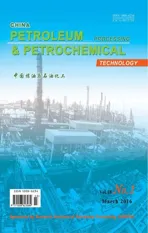CAS Made Breakthroughs in Study of Nano-sized Graphene Iron Catalyst
2016-02-03
CAS Made Breakthroughs in Study of Nano-sized Graphene Iron Catalyst
The CAS’s Dalian Institute of Chemical Physics on the basis of its long-term study on the two-dimensional catalytic materials and catalysis in the nano-confined domains has successfully contained the FeN4structured species in the framework of graphene to attain excellent catalytic activity and stability for catalytically oxidizing benzene to phenol at ambient temperature or even at 0 ℃. This research achievement has provided new thoughts and vivid reference for designing the non-noble metal catalysts for high-ef fi ciency selective oxidation operating at low temperature, which will also be bene fi cial to the upgrading of preparation technology and commercial production of graphene.
The research team via the high-energy milling of iron phthalocyanine molecules and nano-graphene chips has ingeniously succeeded in forming strong covalent bonding between nitrogen atoms and carbon atoms of graphene in order to stabilize the unsaturated ligancy of Fe centers, with nitrogen atoms functioning as the “anchors”. This research team in collaboration with the Southeast University, the CAS Institute of Physics, and a Canadian institution has made breakthroughs in study of single atomic iron catalyst in the nano-graphene con fi ned domain and has for the fi rst time detected the atomic structure of FeN4in the graphene framework. Further theoretical calculations have revealed that the FeN4structure can be effectively stabilized inside the graphene framework to effectively decompose hydrogen peroxide or to catalyze the oxidation of benzene to phenol at room temperature or even at 0 ℃.
杂志排行
中国炼油与石油化工的其它文章
- Modularized Fabrication of Steam Cracking Furnace
- The First in China Butadiene Tailgas Hydrotreating Unit Runs Smoothly
- Catalytic Rectification Adopted in DME Production for the First Time
- CAS Makes New Progress in Manufacture of PTA Derivatives from Biomass
- Novel Non-recycle Methanation Process First Realized in China
- R & D Work on Polyether Has Reached An Internationally Advanced Level at SINOPEC’s Gaoqiao Petrochemical Company
